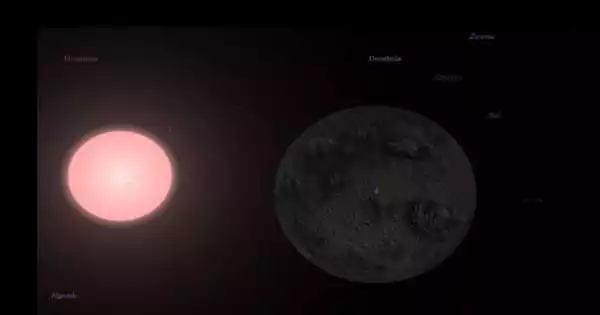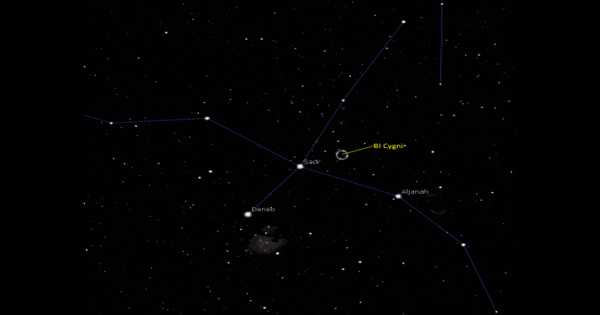A newly discovered map of dark matter in the local universe reveals several previously unknown filamentary structures connecting galaxies. The map, created by an international team that included a Penn State astrophysicist, could help researchers learn more about the nature of dark matter as well as the history and future of our local universe.
Dark matter is an enigmatic substance that accounts for roughly 80% of the universe. It also serves as the skeleton for what cosmologists refer to as the cosmic web, the large-scale structure of the universe that governs the motion of galaxies and other cosmic matter due to its gravitational influence. The distribution of local dark matter, on the other hand, is currently unknown because it cannot be measured directly. Instead, researchers must infer its distribution from its gravitational influence on other objects in the universe, such as galaxies.
“Ironically, it’s easier to study the distribution of dark matter much further away because it reflects the very distant past, which is much less complex,” said Donghui Jeong, a corresponding author of the study and an associate professor of astronomy and astrophysics at Penn State. “As the large-scale structure of the universe has grown over time, so has the complexity of the universe, making it inherently harder to make measurements about dark matter locally.”
A new map of dark matter in the local universe reveals several previously undiscovered filamentary structures connecting galaxies. The map, developed using machine learning, could enable studies about the nature of dark matter as well as about the history and future of our local universe.
Previous attempts at mapping the cosmic web began with a model of the early universe and then simulated the model’s evolution over billions of years. This method, however, is computationally intensive and has yet to produce results detailed enough to see the local universe. The new study takes a completely different approach, employing machine learning to create a model that predicts the distribution of dark matter based on information about the distribution and motion of galaxies.
The researchers built and trained their model using Illustris-TNG, a large set of galaxy simulations that include galaxies, gasses, other visible matter, and dark matter. The researchers chose simulated galaxies that are similar to those found in the Milky Way and eventually determined which galaxies’ properties are required to predict the distribution of dark matter.
“When given certain information, the model can essentially fill in the gaps based on what it has previously looked at,” Jeong explained. “Although the map generated by our models does not perfectly match the simulation data, we can still reconstruct very detailed structures. We discovered that including galaxies’ motion – their radial peculiar velocities – in addition to their distribution greatly improved the map’s quality and allowed us to see these details.”

The research team then applied their model to real-world data from the Cosmicflow-3 galaxy catalog from the local universe. The catalog contains detailed information about the distribution and movement of over 17 thousand galaxies within 200 megaparsecs of the Milky Way. The resulting map of the local cosmic web is published in the Astrophysical Journal.
The map successively reproduced known prominent structures in the local universe, such as the “local sheet” – a region of space containing the Milky Way, nearby galaxies in the “local group,” and galaxies in the Virgo cluster – and the “local void” – a relatively empty region of space adjacent to the local group. It also discovered several new structures that need to be studied further, including smaller filamentary structures that connect galaxies.
“Having a local map of the cosmic web opens up a new chapter in cosmological study,” Jeong explained. “We can investigate how dark matter distribution relates to other emission data, which will help us understand the nature of dark matter. And we can look directly at these filamentary structures, these hidden bridges between galaxies.”
The Milky Way and Andromeda galaxies, for example, have been suggested to be slowly moving toward each other, but whether they will collide in many billions of years remains unknown. The dark matter filaments that connect the two galaxies may hold important clues to their future.
“Because dark matter dominates the dynamics of the universe, it pretty much determines our fate,” Jeong explained. “So we can instruct a computer to evolve the map over billions of years to see what happens in the local universe. We can also use the model to go back in time to learn about the history of our cosmic neighborhood.”
The researchers believe that by adding more galaxies to their map, they can improve its accuracy. Planned astronomical surveys, such as those conducted with the James Web Space Telescope, may enable them to discover faint or small galaxies that have yet to be discovered, as well as galaxies that are further away.
The research team also includes Sungwook Hong from the University of Seoul/Korea Astronomy and Space Science Institute in Korea, Ho Seong Hwang from the Seoul National University in Korea, and Juhan Kim from Korea Institute for Advanced Study.
The National Research Foundation of Korea, funded by the Korean Ministry of Education, the Korean Ministry of Science, the US National Science Foundation, the US National Aeronautics and Space Administration Astrophysics Theory program, and the Center for Advanced Computation at the Korea Institute for Advanced Study all contributed to this research.
















